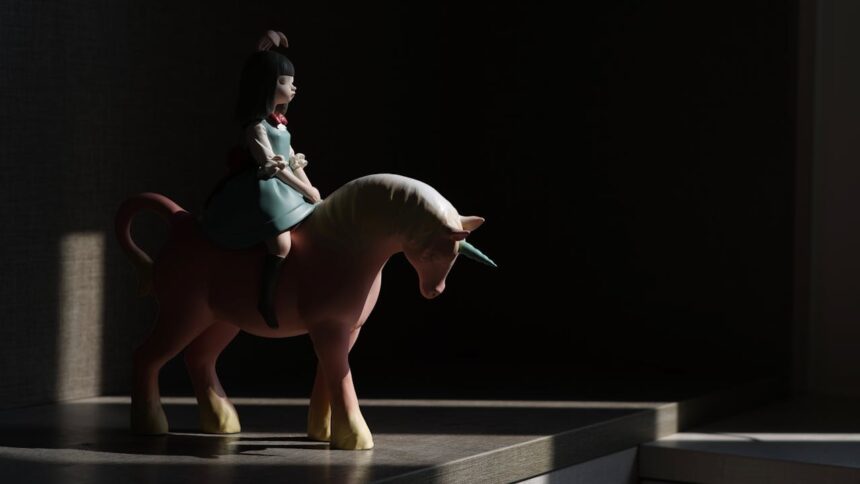The Ünikorn, often depicted as a majestic horse with a single spiraled horn, has captivated the imaginations of people for centuries. This mythical creature embodies a blend of ancient myths and modern fantasy, seamlessly weaving its way through folklore, literature, and popular culture. But what is it about the Ünikorn that continues to enchant us? Let’s explore this fascinating tale.
The Origin of Ünikorns
Tracing Back to Ancient Legends and Folklore
The earliest references to creatures resembling Ünikorns can be found in ancient civilizations. The Indus Valley seals, Greek natural history, and Chinese mythology all feature horned, horse-like beings. Often symbolizing purity, grace, and mystical power, these early depictions laid the foundation for the Ünikorn’s legendary status.
The Debate: Are Ünikorns Real?
Examining Historical Accounts and Scientific Theories
Throughout history, many have claimed to have encountered Ünikorns. Medieval texts and explorers’ journals contain detailed descriptions of these elusive creatures. Some theories suggest these accounts might be based on sightings of real animals like the oryx or rhinoceros, whose single horn could have inspired the myth. Modern science, however, has yet to find concrete evidence of their existence.
Pop Culture Influence
How Ünikorns Have Influenced Literature, Movies, and Art
Ünikorns have left an indelible mark on pop culture. From classic literature like “The Last Unicorn” to blockbuster movies and TV series, these mystical creatures continue to inspire artists and writers. They symbolize the impossible and the magical, often serving as metaphors for innocence and beauty.
Myths vs. Facts
Popular Misconceptions
A common myth is that the Ünikorn can only be tamed by a virgin maiden. This stems from medieval Christian symbolism, where the Ünikorn represented purity. However, historical texts suggest that the Ünikorn’s taming was more a metaphor for spiritual purity rather than a literal requirement.
Another myth is that Ünikorns possess magical healing powers. While this adds to their allure, there is no historical evidence to support this claim. Instead, it originates from folklore meant to enhance the creature’s mystical reputation.
Historical Truths
Contrary to popular belief, the Ünikorn’s horn, often called the alicorn, was historically believed to have medicinal properties. During the Middle Ages, alicorns were highly prized and thought to neutralize poison. However, these were typically narwhal tusks or rhinoceros horns sold by unscrupulous traders.
The Role of Translation
Many myths about the Ünikorn arise from mistranslations of ancient texts. For instance, the Hebrew Bible’s reference to a “re’em” (likely an aurochs or wild ox) was translated to “unicorn” in Greek translations, contributing to the myth’s spread in Western culture.
The Mysteries
Folklore and Legends
Beyond popular myths, the Ünikorn plays a significant role in lesser-known folklore. In Chinese mythology, the Qilin, often likened to the Ünikorn, is a benevolent creature associated with the arrival of a sage or illustrious ruler. It embodies both gentle and fierce qualities, symbolizing justice and protection.
In Persian legends, the Shahmaran, a creature with a human upper body and a serpent lower body, sometimes features aspects reminiscent of the Ünikorn, highlighting the cross-cultural exchange of mythical creatures.
Literature and Art
The Ünikorn has inspired countless works of literature and art. From medieval tapestries like “The Hunt of the Unicorn” to modern fantasy novels, its image continues to evoke wonder and fascination. Artists and writers often use the Ünikorn as a symbol of unattainable beauty and purity.
In Renaissance art, the Ünikorn was frequently depicted in religious contexts, symbolizing Christ’s incarnation. This illustrates the creature’s adaptability in conveying complex theological concepts.
Global Perspectives
Different cultures interpret the Ünikorn’s symbolism uniquely. In Japan, the Kirin is a dragon-like creature that shares similarities with the Ünikorn. It represents peace and prosperity, appearing during prosperous reigns. Such variations enrich our understanding of the Ünikorn, showcasing its universal appeal.
The Ünikorn in Modern Times
Pop Culture Phenomenon
Today, the Ünikorn has transcended its mythical origins to become a pop culture icon. From movies like “The Last Unicorn” to television series such as “My Little Pony,” the Ünikorn continues to captivate audiences of all ages. Its image is ubiquitous in merchandise, symbolizing whimsy and enchantment.
Fashion and Design
The Ünikorn’s influence extends to fashion and design, where it often represents individuality and fantasy. Designers incorporate Ünikorn motifs into clothing, accessories, and home decor, appealing to those who seek a touch of magic in their everyday lives.
Digital Age Symbolism
In the digital age, the Ünikorn has taken on new meanings. In the startup ecosystem, “unicorn” refers to a privately held startup valued at over a billion dollars. This modern usage underscores the creature’s enduring association with rarity and exceptionalism.
Wrapping Up
The tale of the Ünikorn is as enchanting as it is multifaceted. From its origins in ancient civilizations to its modern-day embodiments, the Ünikorn captivates the human imagination, symbolizing purity, magic, and unbridled possibility. Whether you’re a fantasy enthusiast, a mythology lover, or a history buff, the Ünikorn offers a rich tapestry of stories and meanings to explore.
If you’ve enjoyed this deep dive into the world of Ünikorns, we invite you to share your thoughts and personal encounters with this legendary creature. How has the Ünikorn inspired you? What myths or facts do you find most fascinating? Join the conversation and continue the enchantment.





